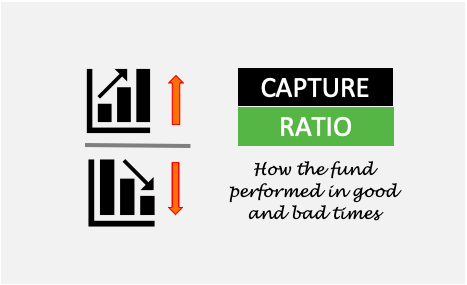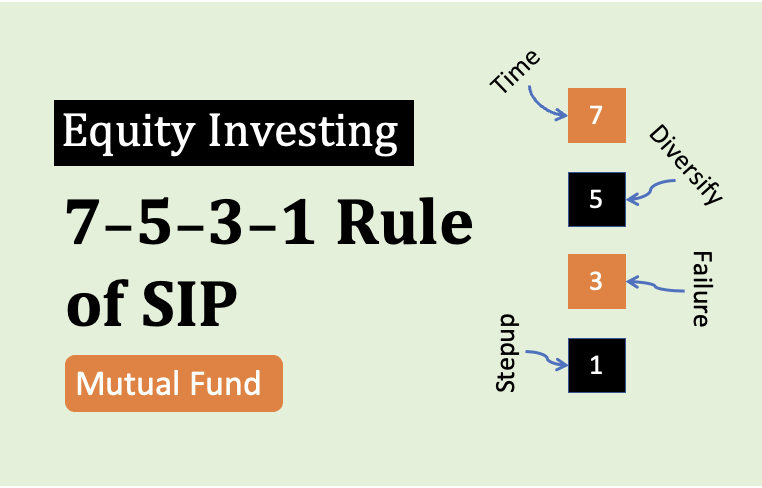What is NAV of mutual fund? NAV means “Net Asset Value”. The significance of NAV for us is, we buy units of a mutual fund scheme at its current NAV.
Like ‘share price’ is for stocks, ‘NAV’ is for mutual fund scheme’s. But the similarity of NAV with share price ends here itself. Why I say so?
Because lower is the share price the better. But we cannot say the same thing for NAV. How?
Example: Suppose there are two index fund schemes which has Nifty as its benchmark. Hence, both these funds will have an identical portfolio. Now suppose, the price of these funds are as below:
Index Fund A (Rs.15/unit)
Index Fund B (Rs.20/unit)
Out of the above two index fund schemes, Which fund is better priced? Index Fund A looks cheaper, right? This assumption may be inaccurate. Why?
To understand this we must know how NAV of mutual fund is calculated.
This is what we will also discuss in this article. But before that let’s know more basics about the NAV itself.
What is the NAV Formula?

NAV = Net Assets / No of units outstanding.
Hence to understand NAV, we must first understand:
- What are “Units“, and
- What is “Net Asset” of a mutual fund scheme.
Units…
Each mutual fund scheme is divided into many “units”. Each unit represent single share of the mutual fund scheme.
At the time of NFO, units are offered to investors at the “offer price”. After the NFO is closed, one can buy/sell the same units at its NAV price (not applicable for closed ended funds).
Suppose you invested Rs.15,000 in a mutual fund scheme which is available at per unit price of Rs.15. How many units you will get upon investing?
No of units = Investment Value / Price of one unit.
No of units = Rs.15,000 / Rs.15 = 1,000 units.
Net Assets…
A mutual fund scheme’s portfolio is composed of different types of assets. A typical mutual fund portfolio consists of stocks, bonds, deposits, cash etc.
Together, the current market value all the individual securities form the total asset of the scheme.
Net Asset = Total Asset – (All Costs).
What are the costs? It is the expense incurred by the mutual fund to run its operations. These costs can be, fund management charges, advertisements, regulatory expenses etc.
When all the cost is deducted from the total asset of the mutual fund scheme, what remains balance is called “Net Asset”.
How net asset of the company will change? It will change in the following conditions:
- In case of a new transaction.
- When market value of securities goes up.
- When securities earn income.
- When expense are booked.
New Transactions: When people buy new units, cash balance of the scheme will go up. In this case net asset will go up. When people sell their units, cash balance of the scheme will go down. In this case net asset will fall.
Market Value: Suppose the portfolio of a mutual fund scheme has stocks of TCS in its portfolio. If TCS price goes up, net asset of the mutual fund will also go up. If TCS price falls, net asset will also fall.
Income: Suppose the portfolio of the scheme includes stocks of TCS, and Bank Deposit as its constituents. When TCS will pay dividends, net asset of the scheme will go up. When the bank deposit will pay interest, net asset goes up.
Expenses: Whenever the expenses are booked in the accounts of the mutual fund scheme, its net asset will go down.
Net Asset Value (NAV)…
Net Asset Value (NAV) is calculated using the below NAV formula:
NAV = Net Assets / No of units outstanding.
How Net Asset Value (NAV) of the scheme will change? With every change in net asset there must be a change in NAV, right? Not always. How? Lets try to understand this with an example.
Suppose there is a mutual fund whose Net Asset is Rs.100,00,000 and number of units outstanding is 10,00,000. At this point of time, what will be the NAV of this fund?
| Net Asset (Rs.) | Units (Nos Crores) | NAV (Rs.) |
| 1,00,00,000 | 10,00,000 | 10 |
Now suppose the market value of securities in the scheme’s portfolio goes up by Rs.25,00,000. What will be the new NAV of this fund?
| Net Asset (Rs.) | Units (Nos Crores) | NAV (Rs.) |
| 1,25,00,000 | 10,00,000 | 12.5 |
Suppose an investor redeems his 1,000 number units @Rs.12.5 NAV. What will be effect of this transaction on the NAV?

Redemption of scheme’s units does not alter its NAV. Why? Because the transaction (selling) happens at the NAV. The rate at which the net assets falls (due to selling), the number of units falls in the same rate. Hence the ratio of Net Asset and Units, remains the same.
Suppose an investor buy’s 1,000 number units @Rs.12.5 NAV. What will be effect of this transaction on the NAV?

Buying of the scheme’s new units does not alter its NAV. Why? Because the transaction (selling) happens at the NAV. The rate at which the net assets rises (due to buying), the number of units rises in the same rate. Hence the ratio of Net Asset and Units, remains the same.
Conclusion…
What the above example tell about the behaviour of NAV?
Just because new buyers are buying more units of a mutual fund scheme, its NAV will not appreciate. Similarly, just because existing unit holders are selling their units, the NAV of the scheme will not fall.
What will bring an appreciation in NAV of a mutual fund scheme are the following:
- Net appreciation in market value of its securities.
- Income earned by the constituent securities.
Final words…
At this point we are ready to make another very important conclusion related to the NAV of mutual fund. What is it?
Return earned from a mutual fund scheme is not dependent on the NAV at which the units are purchased. How?
Let’s bring here the example of index funds we saw above.
Example: Two index fund schemes which has Nifty as its benchmark. NAV of bother these index funds are as below:
Index Fund A (Rs.15/unit)
Index Fund B (Rs.20/unit)
As an investor, which index fund looked better valued? The answer is, both are the same. Both will render the same returns irrespective of their NAV levels. How? Let’s understand it with a simple example.
Example: Suppose Ram and Raj invested Rs.5,000 in the above index funds. Ram bough Fund A, and Raj bought Fund B. Number of units in their portfolio after this purchase will be as below:
Units of Ram: (333.33 nos)
(Rs.5,000 / 15)
Units of Raj: (250 nos)
(Rs.5,000 / 20)
Suppose Ram and Raj held on to their units for next 5 years. In this time period, Nifty index rose @12% per annum.
As both the index fund has Nifty as their benchmark index, hence the NAV of both this funds will also grow at the same rate 12% p.a. in these 5 years.
Hence, In next 5 years the NAV of the index fund A & B will be as below:
Index Fund A @12% p.a. growth in 5 years
- NAV (start): Rs.15.
- NAV (end): Rs.26.44
Index Fund B @12% p.a. growth in 5 years
- NAV (start): Rs.20.
- NAV (end): Rs.51.11
What will be the “value of investment” for Ram and Raj at the appreciated NAV levels?

The appreciated value of investment for Ram and Raj after 5 years will be the same.
It remans same irrespective of the NAV levels at which the units has been purchased. What does it mean?
The returns of the mutual fund scheme is not dependent on its NAV. It is dependent on the quality of its constituent securities.
So as an investor, we shall focus on understanding the quality of the mutual fund scheme’s portfolio, instead of focusing on its NAV levels.






I really thank you for this explanation. I was really finding it difficult to understand how the NAV is decided in a mutual fund. The young bank employee could not explain it properly. I did not find the answer in the explanations provided by the well known US and Swiss Mutual Funds. Thank You!
Thank you for posting your comment.
Thanks for this awesome blog
I really loved the way you have made this informative blog full of insights.
Its really good to read your blog.
Keep writing and sharing
Dear sir.
I appreciate your sincere efforts to educate investors,in totally simple,different and smart manner.
Sir, before some days ,at the end of each article ,there were numbers 1,2,3,….. etc.By clicking on these numbers we were able to read past
articles. But now this facility is withdrawn .so i request you to take action that we will be able to read previous articles.
Regards..
Sunil Phatak.
Thanks for your feedback on my work. It means a lot.
To read previous article, I will request you access them using the “Archive” link provided in the Menubar (More > Archive). Thanks for asking.